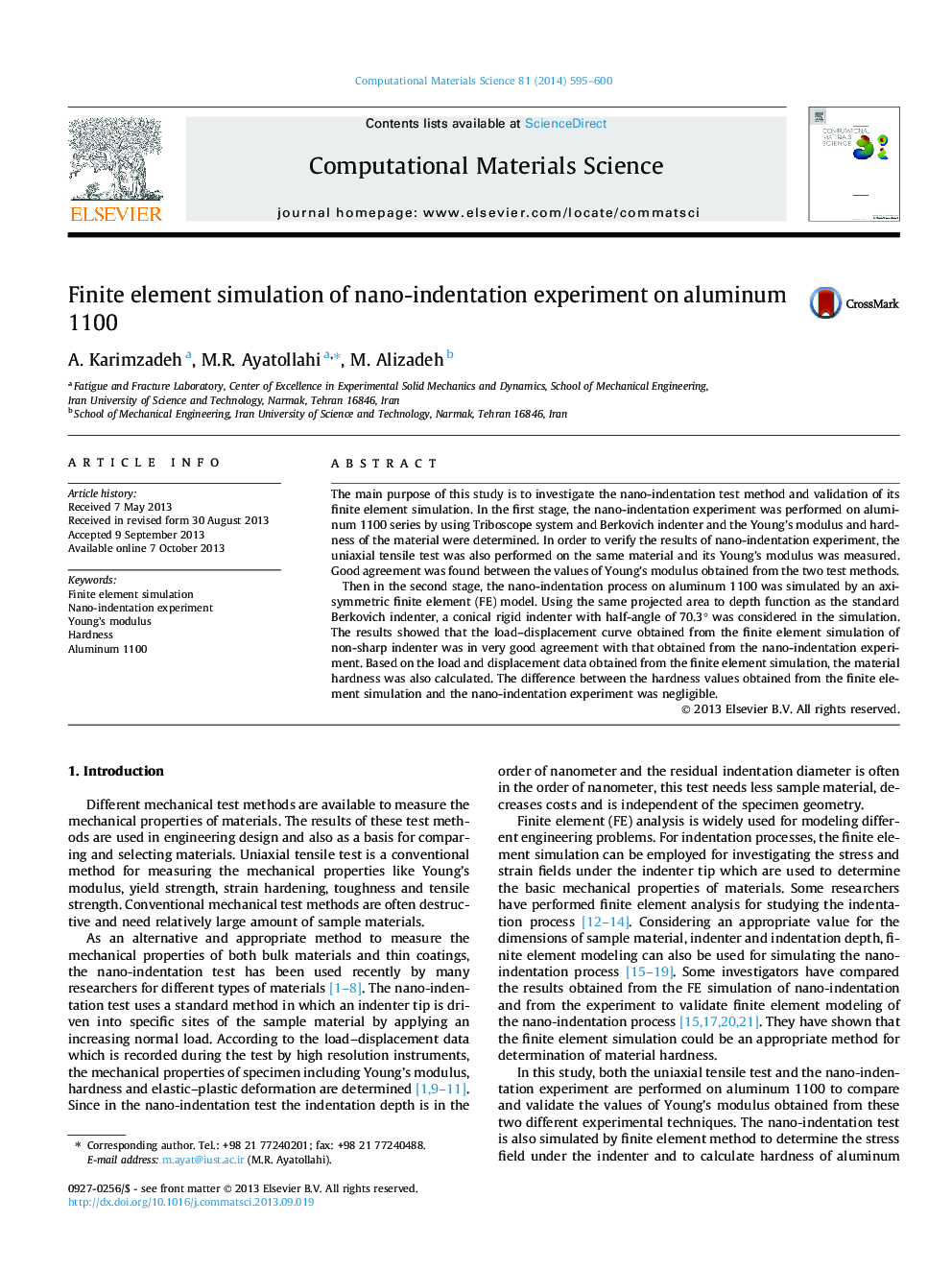| کد مقاله | کد نشریه | سال انتشار | مقاله انگلیسی | نسخه تمام متن |
|---|---|---|---|---|
| 1560903 | 1513928 | 2014 | 6 صفحه PDF | دانلود رایگان |
• Nano-indentation and uniaxial tensile experiments were performed on aluminum 1100.
• Young’s modulus values measured from the two test methods were in very good agreement.
• An axisymmetric finite element model was used to simulate the nano-indentation process.
• Simulation results were validated by experimental results of nano-indentation test.
• Material hardness obtained from FE analysis was consistent well with the test result.
The main purpose of this study is to investigate the nano-indentation test method and validation of its finite element simulation. In the first stage, the nano-indentation experiment was performed on aluminum 1100 series by using Triboscope system and Berkovich indenter and the Young’s modulus and hardness of the material were determined. In order to verify the results of nano-indentation experiment, the uniaxial tensile test was also performed on the same material and its Young’s modulus was measured. Good agreement was found between the values of Young’s modulus obtained from the two test methods.Then in the second stage, the nano-indentation process on aluminum 1100 was simulated by an axisymmetric finite element (FE) model. Using the same projected area to depth function as the standard Berkovich indenter, a conical rigid indenter with half-angle of 70.3° was considered in the simulation. The results showed that the load–displacement curve obtained from the finite element simulation of non-sharp indenter was in very good agreement with that obtained from the nano-indentation experiment. Based on the load and displacement data obtained from the finite element simulation, the material hardness was also calculated. The difference between the hardness values obtained from the finite element simulation and the nano-indentation experiment was negligible.
Journal: Computational Materials Science - Volume 81, January 2014, Pages 595–600
